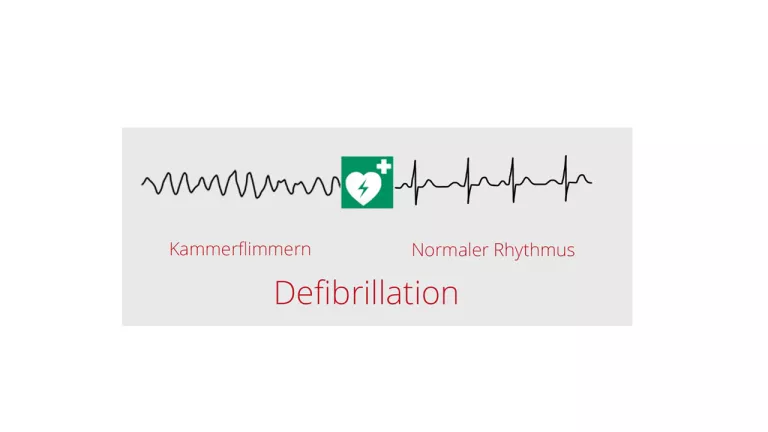Survival rate of up to 90% if a surge is delivered within the first minute after collapse.
Sudden circulatory arrest is one of the leading causes of death in Europe. When the rhythm is recorded shortly after collapse, especially by an AED on site, the percentage of patients with ventricular fibrillation is up to 76%. The recommended treatment for ventricular fibrillation is immediate electrical defibrillation.
The faster a defibrillator is on site and a person in ventricular fibrillation can be defibrillated, the higher the success of a resuscitation attempt.
Cardiopulmonary resuscitation is used to bridge the gap until an AED arrives.
Until the arrival of the defibrillator (AED), resuscitation measures (chest compressions as well as ventilation) should be performed. These help to preserve heart and brain functions. However, it is very unlikely that chest compressions can change ventricular fibrillation to a normal rhythm.
Delivery of an electric shock within 5 minutes of receiving the emergency call
Early defibrillation is the primary goal. A survival rate of up to 90% is reported if defibrillation is achieved within the first minute after collapse. If defibrillation is delayed, survival rates drop to about 50% after 5 minutes and to about 30% after 7 minutes. After 9 to 11 minutes, survival is still about 10% after, after 12 minutes only 2% to 5%.
Good Reasons for a defibrillator (AED)
Early defibrillation is critical to survival in circulatory arrest for several reasons:
1. ventricular fibrillation is the most common initial rhythm in observed sudden circulatory arrest.
2. the most effective treatment for ventricular fibrillation is electrical defibrillation (electric shock).
3. ventricular fibrillation tends to turn into asystole, i.e. a complete stop of the heart, within a few minutes.
4. the earlier defibrillation takes place, the better the prognosis.
Implementing a defibrillator in your area is easy. We are happy to provide you with a free consultation.
Top defibrillators
Defibrillators that have proven themselves over the years.
